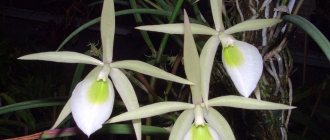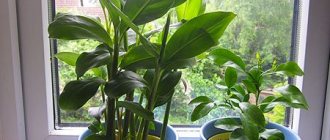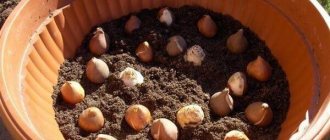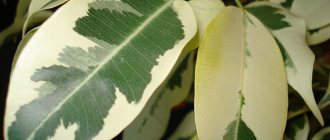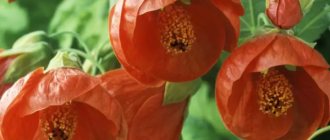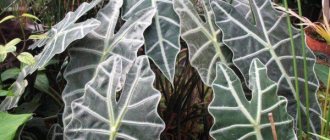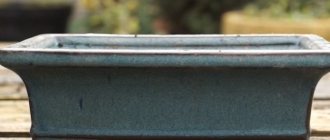If you are looking for unusual plants to grow in your home, then Albuka spiral is simply an ideal option even for novice gardeners.
The South African pearl will be the highlight of any collection of indoor flowers.
Albuca spiralis is one of a kind and completely unknown until recently, an amazing species of bulbous succulents from the Asparagaceae family.
It deserves special attention due to its unusual leaves, which curl like a small corkscrew.
This strange shape protects them from overheating and evaporation of moisture in the sunny African climate and allows air to circulate freely around the succulent.
The growing season of Albuca spiralis occurs in the winter months, during which it produces a basal rosette of 15-20 leaves twisted in a spiral.
The more sun a plant receives, the more its leaves curl.
Flowers appear in April-May on thick fleshy peduncles, the height of which can reach 40-50 cm. They are collected in a spike-shaped inflorescence of 10-20 bell-shaped greenish-yellow flowers, which have a light vanilla aroma.
Flowering duration is about 10 weeks.
With the beginning of summer, Albuka spiral begins a period of rest. At this stage, all the leaves die off and the bulb shows no signs of life.
During dormancy, the plant practically does not need watering.
Growing Albuka at home
For successful cultivation, it is necessary to provide the plant with an imitation of its natural habitat and natural development cycle.
Indoor exposure is only suitable in the south, since the bulbous succulent needs a lot of sunny color.
On cloudy days, illumination with special phytolamps with an optimal illumination range from 2500 to 3500 lux is desirable.
The main difficulty in care is providing cool conditions during the growing season. The temperature during the day should not exceed +16 °C, and at night about + 5-10 °C.
These are the temperatures that prevail in the desert during the rainy season, which is when the plant actively grows.
To provoke flowering in April, during the dormant period (November-December) it is necessary to provide the following conditions with differences in day and night temperatures:
- during the day - no higher than + 10 + 15 °C;
- at night - +6 + 10 °C is permissible.
Features of spiral albuca flowering and dormant period
For flowering, albuca requires differences in night and day temperatures. It blooms in spring, in April-May. The period lasts almost 10 weeks.
When the plant fades, boxes containing seeds appear. After its leaves wither, they stop watering and fertilizing, and a dormant period begins.
In the fall, at the end of the season, the bulb is replanted. A new substrate is used, watering is resumed, and the pot is placed in a lighted place.
Landing
To plant Albuca spiralis, choose flat, shallow containers or pots, leaving half the bulb above the ground. The procedure is best carried out in early autumn.
The succulent grows on light, well-drained, sandy or rocky soils, so add coarse river sand (1:1) to the universal succulent substrate and provide a good drainage layer at the bottom of the expanded clay pot.
Beautiful small stones on the soil surface and planting low-growing succulent species as companions will allow the pot to look decorative even during the dormant period of Albuca spiral.
Video
For a short story about the plant, watch the video:
Albuca spiralis is a plant unusual in its beauty. And it will definitely thank you for proper and constant care with its flowering and delicate aroma.
Read about other bulbous houseplants: amaryllis, wallota, hemanthus, hyacinth, hippeastrum, gloriosa, drimiopsis, zephyranthes, Indian onion, calla, clivia, crinum, narcissus, nerine, oxalis, lily, scylla, freesia, eucharis. The catalog of all types is here.
Reproduction
It reproduces well by seeds, which produce flowering plants in 3-4 years. Only fresh seed is suitable for planting, since after 6 months it loses its ability to germinate.
Important! Albuca seeds do not remain viable for long - only six months
When planting, press large seeds to the surface of the soil, only slightly deepening them, and cover them with film.
The optimal soil temperature for germination is 26-28 °C. Water very carefully so as not to over-wet the substrate.
If all conditions are met, seedlings will appear in two weeks.
We begin to fertilize only when a small bulb is formed, and this happens already in the first year of the seedlings’ life.
Another method of propagation is vegetative, in which the “children” of the mother bulb are separated and planted in separate small pots. With this method of propagation, the plant retains all the characteristics inherent to the variety - the shape of the leaves and the aroma of the flowers.
The most popular variety that can be found on sale is “Frizzle Sizzle”, which was obtained by Dutch breeders in 2007 using the in vitro method. It differs from the species in having more curled leaves.
After a dormant period, a bulb about 8 cm in diameter develops into a compact rosette of numerous spiral leaves, the length of which when expanded is up to 16 centimeters. The diameter of the entire rosette, as a rule, does not exceed 15 cm. The height of the peduncles is about 20 cm.
Botanical description of the variety “Frizzle Sizzle”
Albuca Spiralis, or translated from Latin as spiral albuca, belongs to the asparagus family. This is a perennial herbaceous succulent plant.
The plant can be found on sale under the name “Spiralis Frizzle Sizzle”.
- The bulb is white, round in shape, slightly flattened. Its diameter is up to 5 cm.
- Leaves - 15-20 spiral leaves of green color with a shade of gray are collected in the basal rosette. In the straight state, the length of each spiral is 30-35 cm. With the onset of heat, the leaves curl up and become like a serpentine - this is how the plant loses less moisture. In winter, the albuca sheds its leaves.
- Peduncle - fleshy, gray in color; reaches 60 cm in length. The inflorescence resembles a brush of 10-20 flowers with a diameter of 3 cm. The flower has a peduncle with a diameter of 4 cm, and pointed bracts. The white petals have a greenish stripe with a yellow edge.
- Colors - there are species with yellow flowers with a vanilla aroma, white flowers with characteristic greenish stripes.
Possible problems
By carefully examining the plant and soil, you can quickly notice signs of disease or lack of care:
- Leaves do not curl - poor lighting, low temperature, excessive feeding, characteristics of the species (we will look at it in more detail below).
- Rotting of bulbs - waterlogging of the soil mixture, stagnation of water. It is unlikely that such a bulb will be saved, but for prevention it is necessary to carefully regulate watering.
- Leaves with brown spots are a fungal disease. Affected leaves must be removed and the plant treated with fungicides.
- Falling leaves - strong shading, sudden temperature changes, cold draft, excess or lack of moisture.
- The plant is stretched, but does not bloom - poor lighting.
- A lot of greenery and no flowers - excess nitrogen fertilizers.
Reasons for the straightening of leaves in Albuka
One of the most common problems that Albuca spiralis owners encounter is the loss of spirals in the leaves. Plants become straight and no longer spiral or curled. This can be especially unpleasant for owners who purchased Albuka specifically because of its unique shape.
One of the things that causes Frizzle Sizzle to straighten its leaves is when the plant begins to flower. Some specimens can bloom without straightening, while others cannot.
The same plant can behave differently in different growing seasons. One season it produces flowers without losing the spiral shape of the leaves, and the next season it loses its shape.
Once straightened, the leaves will not be able to curl up and form a spiral shape.
The only way to bring the spiral leaves back is to allow the plant to go dormant. Stop watering in the summer, let the leaves die back and leave the bulb. As it grows, the new leaves will take on a spiral shape.
If you don't want your Albuka to lose her curls, you can trim the bud when it appears.
How to care for a coffee tree at home
Many plant owners have grown Albuca spiralis for many years without any problems. The only thing to watch out for is root rot caused by overwatering.
Albuca is a magical little plant with unique spiral leaves that requires little care. However, general care tips will ensure that this captivating plant remains happy and healthy both indoors and outdoors.
Author: Yulia Zakrevskaya Updated: January 04, 2021
Comments
Nina 12/01/2018 18:43 good and informative article.
where can I buy such a plant or at least seeds? Answer
Julia 12/02/2018 10:18 Seeds and flowers can often be seen in online stores.
Answer
Update list of comments
Diseases and pests
If not properly cared for, albuca is susceptible to diseases and pests.
- Bulb rotting. The plant is thrown away, to avoid problems, the soil is moistened regularly, but not too often, the presence of standing water is not allowed, the cause of the damage is waterlogging of the soil.
- Brown leaves are a sign of rust; they dry out and fall off. They get rid of the affected plants and treat them with fungicides (copper sulfate, Oksikhom).
- The leaves do not curl due to stagnation of water.
- Leaves fall - the flower is in the shade, temperature changes, draft or soil dries out, too much watering is possible.
- Spider mites - leaves curl and fall; if detected, treat with Fitoverm, Actellik.
- The root mite affects the bulbs; insectoacaricidal agents will help: Apollo, Kemidis, Rogor S.
For prevention, the soil is treated with colloidal sulfur, disinfected before planting (calcined in the oven), the drainage layer should be kept in a manganese solution, then dried.
The soil
Sandy soil is ideal for albuca. The plant comes from a naturally sandy region of the world, and the bulbs grow best when they are in this type of soil. You can add a little compost, but don't add too much material that will retain moisture on the bulb. Albuka tolerates poor soils well!
For soil, especially if you're planting albuca in containers, consider succulent and cactus mix mixed with African violet mix. Albuca grows well in typical soil with the addition of 50-70% mineral sand. Coarse sand, pumice or perlite are excellent sources of mineral soil.
The soil pH level is usually not important for albuca. Aim for the neutral range.
Leaves do not curl - what to do
The leaves of the plant are beautiful spirals. If such phenomena are not observed, the plant does not have enough light or moisture stagnates in the soil.
How to achieve twisting spirals
For the spirals to appear, you need to solve the lighting issue. The pot must be placed on a sunny windowsill. If this is not possible, the culture is illuminated with a phytolamp or other device.
If the reason is stagnant moisture or dry soil, the motivating factors are eliminated.
Important! Flower growers claim that the unusual shape of the foliage helps reduce the evaporation of liquid. This allows albuca to more easily tolerate high temperatures.
Transfer
As a bulbous plant, you will find that replanting is not common for Albuca. Albuca produces bulbs that do grow, but new bulbs will take time to form. Because they grow fairly slowly, you won't need to repot for several years.
If it's time to repot the plant, choose a pot about 5 cm wider than the current one. Carefully remove excess soil to expose the bulbs and their root systems. Carefully inspect the bulbs, removing any visible rot.
After making sure the rest of the plant is free of damage, add new potting soil. Carefully plant the albuca in the soil at the same height as it was previously planted. When finished, gently pack the soil around the plant, but do not pack it too tightly to prevent compaction.
Fertilizers
It is best to fertilize albuca at certain times of the year. It needs a good start in late fall as this is when the plant begins to actively grow. After this, a second feeding is ideal, when flower stalks begin to form in the spring.
A balanced liquid fertilizer is best for this plant. Water the albuca well the day before fertilizing to ensure it is fully hydrated. Then work the liquid fertilizer into the soil rather than onto the plant itself. Allow excess to drain through the soil.
Apply fertilizer once early in the growing season and give a second dose a few weeks later if necessary. If you're using a weak organic fertilizer, fertilize your albuca monthly during its growth spurt, but if you're using something 2-2-2 or higher, stick to one or two applications early on and that's it. Fertilize again when you first see signs of flower stalks developing. Do not fertilize in summer and early autumn.
Trimming
One of the best things about albucas is that they don't require much pruning!
The main pruning you will need to do is to remove the flower stalks. You can wait until the seeds have formed. If you don't want the seeds, remove the flower stalks once the flowers have faded. This may cause the plant to bloom a second time, although this is rare.
In addition, leaves exposed to direct sunlight may become slightly burnt. Remove them. In summer, it is also possible that the plant's leaves may turn yellow during dormancy, and these too need to be trimmed. Use sharp pruning scissors to make a clean cut.
